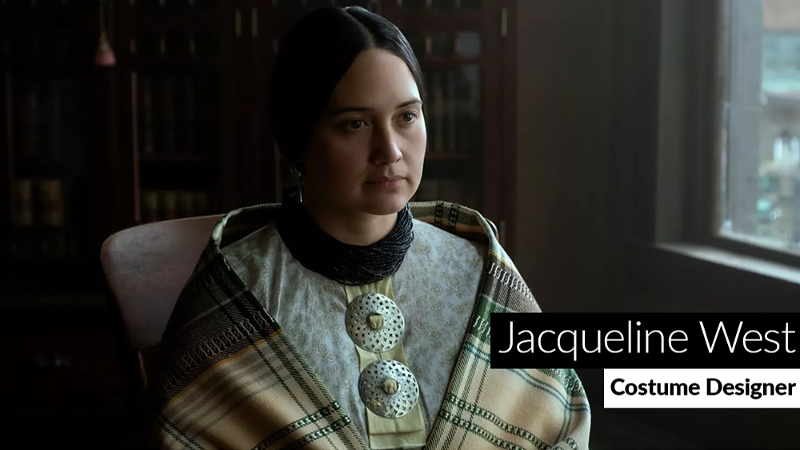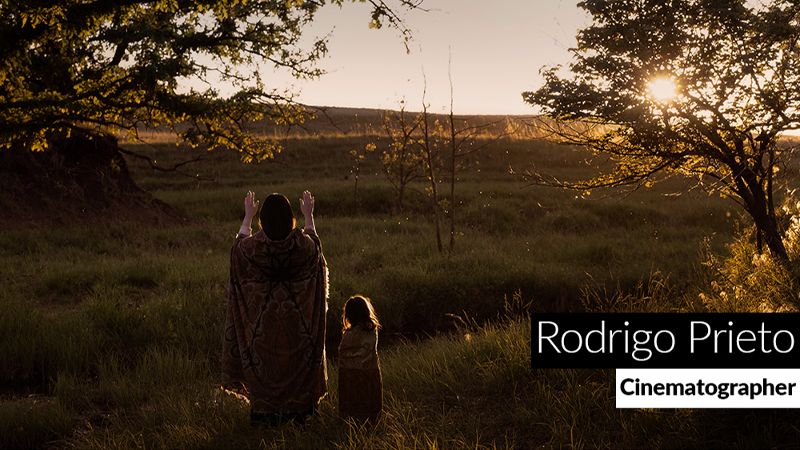‘I Feel Such a Responsibility’: Inside Making of ‘Killers of the Flower Moon’

Director Martin Scorsese has long been known for his rigorous dedication to authenticity, and “Killers of the Flower Moon” is quite possibly his densest film yet in terms of journalistic detail. Working closely with Osage advisers who vetted every line of Scorsese and Eric Roth’s screenplay, researcher Marianne Bower compiled thousands of pages of research material and visual references that she made available to all of the department heads as resources to tell their tragic story. The result is one of the most fully realized historical epics ever put on screen, a film in which each gesture, fabric, prop, and camera movement builds to create an immersive emotional experience for the audience.
The demand for verisimilitude placed extreme demands on Scorsese’s collaborators, all of whom felt a deep sense of responsibility to the Osage people. “It was important to [Scorsese] that it be truthful and fair,” production designer Jack Fisk told IndieWire, “and that got me so excited about doing the film.” The movie reunited Fisk with costume designer Jacqueline West, with whom he had collaborated on some of the greatest films of the past 20 years — movies like “The New World,” “The Tree of Life,” and “The Revenant.” “Jack and I have traded research on 10 movies,” West said, adding that home movies shot by the Osage in the ’20s “took me down many rabbit holes. By the time I got to Oklahoma, I had about 2,000 pieces of paper to make boards with for my crew.”
While Fisk and West were new to Scorsese’s team, cinematographer Rodrigo Prieto has been a trusted collaborator for 10 years, having shot all of the director’s features since “The Wolf of Wall Street.” Because he participates so early in Scorsese’s process, Prieto worked on an eventually abandoned incarnation of “Killers of the Flower Moon” that adhered more closely to David Grann’s book. “It was more the story of the FBI,” Prieto said. “That was the script that I first read and started prepping.” When Scorsese and Leonardo DiCaprio decided to shift emphasis to focus more on the Osage characters, Prieto felt the movie became deeper and more exciting. “I’m really happy they did, because it enabled a much more profound study of the injustice of it all, and a deeper exploration of the human psyche.”
In the videos below, watch how West, Prieto, and Fisk created the visual language to convey the complex ideas and heart-wrenching emotions at the core of “Killers of the Flower Moon.”
The Costumes of ‘Killers of the Flower Moon’

The exhaustive research that “Killers of the Flower Moon” required made it a dream project for Jacqueline West, whose background is in art history. “I love doing research, it’s my favorite part of the movie,” she said. “I call it time travel, just really diving into another period.” That research led to hundreds of intricately designed costumes that are not only period-accurate but dramatically expressive, as West (working with Osage wardrobe consultant Julie Okeefe) used subtle distinctions in the clothes to tell the story and differentiate the characters. The group of sisters at the center of the story, for example, is defined by both their similarities and their differences. “I made boards for all the sisters,” West said. “I had to dive into who they were, and I got an idea of different women within a family and how much they wanted to be part of this new society that was imposed upon them.”
In the case of Mollie (Golden Globe winner Lily Gladstone), West opted to have her wear traditional blankets that would show her commitment to tradition. “That blanket is like armor when she’s sitting there talking to that guardian. One sister said the blanket was like a target on their backs, but it wasn’t for Mollie. For Mollie, it was a point of pride, and she wasn’t going to give just because of the things that were being imposed upon them.” West’s research into the Osage Nation not only informed those characters but also led to a revelation that gave her insight into the look of the character played by Leonardo DiCaprio. “I found a beautiful piece of research about one of their drivers who was sitting in a convertible waiting at a train station. He’s got an everyman kind of suit on, maybe Sears catalog, with a wide tie and a flat cap. He became my Leo until he marries Mollie.”
In the video above, watch how Jacqueline West carefully builds character and creates a vivid sense of time and place through costume design.
The Cinematography of ‘Killers of the Flower Moon’

Just as Jacqueline West traces the changes in DiCaprio’s Ernest Burkhart through his clothes, taking him from a World War I “doughboy” uniform to the ornate tailored suits of his well-heeled years, Rodrigo Prieto uses light to convey both Ernest’s changing circumstances and the audience’s growing awareness of his moral vacancy. “The lighting becomes more contrasty with deeper shadows,” Prieto said. “I also started using overexposure on Ernest at certain points to make the audience feel the discomfort that he’s going through. When he’s on the witness stand I put a very harsh sunlight on his face. Imagine that you’ve been lying to this person you love and basically participating in the murder of her family, and you’re being exposed in front of her and in front of all the people in town. I wanted to make the lighting reflect that.”
For Mollie and the Osage characters, Prieto took a different approach. “The look I gave them is much more naturalistic,” he said. “Shooting on film, utilizing the amazing color depth that film negative has to reproduce nature — the color depth where you see the nuance in all the different shades of green in a tree, for example. That became the key for everything that was just the Osages, without the presence of the descendants of the white settlers.” Throughout the film Prieto experimented with different types of imagery to make the film itself a commentary on how photography shapes our perception of events, combining early photographic techniques and custom-made lenses with ENR processing and footage shot on Scorsese’s own 1917 Bell and Howell camera. “It was fascinating to dive into, because one of the movie’s themes is the representation of stories.”
In the video above, Rodrigo Prieto breaks down the various looks of “Killers of the Flower Moon” and what they say about the film’s characters and themes.
The Production Design of ‘Killers of the Flower Moon’

Jack Fisk has long had a reputation as one of the greatest designers in the business when it comes to conceptualizing and building exterior sets — his credits include masterpieces of outdoor production design like “Days of Heaven,” “There Will Be Blood,” and “The New World” — so it’s no surprise that Scorsese called on him to bring the world of early 20th-century Oklahoma to life. “I love building,” Fisk said, and on “Killers of the Flower Moon” he had the opportunity to build everything from the bustling main street of Fairfax to a replica of the local train station with 600 feet of working track. For Fisk, the key was creating sets that would allow the cast and crew to get lost in the period; when the actors play pool, for example, they and the audience can see a working town with hundreds of extras through the windows, providing an epic context for the story that both expands and deepens the emotional impact of the complex and intimate interactions at the movie’s core.
That intersection between the epic and the intimate is a hallmark of Fisk’s work going back to “Badlands” 50 years ago, and it reaches its apotheosis in “Killers of the Flower Moon.” “Character is always the key,” according to Fisk, who noted that the relationship between Mollie and Ernest is where all of the film’s thematic, historical, emotional, and political concerns intersect. “I feel such a responsibility because as filmmakers, the vision we set forth is the way most people will think about the subject until someone comes along with a better vision. If we make it unreal, they’ll have an unreal perception of that time in Oklahoma.”
Watch the video above to hear Jack Fisk explain his approach to designing the large-scale sets of Fairfax and its train station as well as to the more intimate spaces occupied by Mollie and her relatives.









